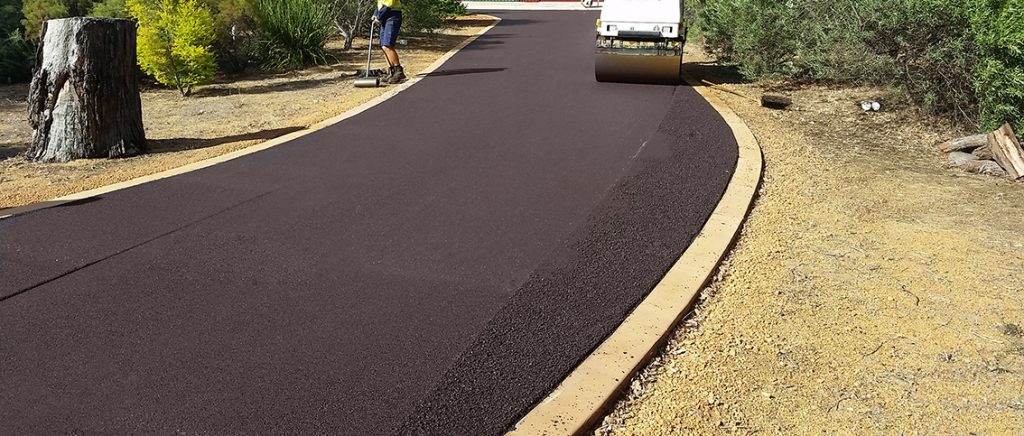Make Best Use Of Area Performance with Hot Mix Asphalt Angled Parking Lot Solutions
Make Best Use Of Area Performance with Hot Mix Asphalt Angled Parking Lot Solutions
Blog Article
Opening the Tricks of Hot Mix Asphalt Innovation
Discovering the midsts of warm mix asphalt technology reveals a world where precise processes and accurate formulations merge to form our roadways and framework. The fusion of accumulations, fillers, and binders isn't just a construction task but a critical orchestration of longevity and effectiveness.
Relevance of Warm Mix Asphalt
Warm Mix Asphalt plays a crucial duty in modern framework development due to its toughness and cost-effectiveness. As one of the most typically utilized paving product for roads, freeways, and car park, Hot Mix Asphalt uses a series of benefits that add to its value in construction projects. One crucial advantage is its ability to withstand rush hour loads and rough weather, offering a lasting and trustworthy surface area for transport networks. Furthermore, Warm Mix Asphalt is cost-efficient in both initial construction and long-lasting upkeep, making it a recommended selection for numerous framework jobs.
The toughness of Hot Mix Asphalt stems from its structure, which consists of accumulations, binder, and filler materials that are meticulously chosen and mixed to fulfill specific efficiency requirements. Generally, the relevance of Hot Mix Asphalt in facilities growth can not be underrated, as it continues to be a foundation of modern building and construction methods.
Parts of Asphalt Mixes
The make-up of asphalt mixes consists of meticulously chosen aggregates, binder, and filler materials that are vital for accomplishing certain efficiency requirements. Accumulations are the main component of asphalt mixes, providing toughness and stability. These accumulations can be natural, such as crushed rock or crushed rock, or synthetic, like recycled materials from old sidewalks. The binder, usually bitumen or asphalt concrete, holds the aggregates together and provides versatility and resilience to the mix. The selection of the binder is important as it straight influences the mix's performance in various weather problems. Fillers, such as moisturized lime or Portland cement, are made use of to enhance the mix's workability and aging resistance. Angled Parking.
The combination and percentage of these elements play a considerable role in figuring out the top quality and performance of the asphalt mix. Designers carefully develop the mix to meet details needs, considering variables like traffic volume, climate problems, and sidewalk lifespan. Correct option and harmonizing of accumulations, binder, and fillers are essential for creating resilient, lasting asphalt pavements.
Combining and Manufacturing Strategies

When the aggregates are selected, the binder, typically asphalt cement, is contributed to bind the products with each other. The binder's top quality and quantity dramatically influence the mix's strength, resistance, and versatility to environmental variables. Additionally, fillers like moisturized lime or Rose city cement may be integrated to enhance specific qualities of the asphalt mix, such as its workability or wetness resistance.
Throughout production, the aggregates and binder are warmed, typically in between 250-325 ° commercial parking lot paving F(121-163 ° C ), to help with blending and ensure proper covering of the aggregates. The blending process has to be complete to achieve an uniform mixture that advertises the preferred performance features of the asphalt. Various strategies, such as batch mixing or drum blending, are used to attain premium and consistent asphalt blends for construction jobs.
Elements Impacting Asphalt Performance
Aspects affecting asphalt performance include an array of variables that influence the toughness, durability, and general quality of asphalt sidewalks. One crucial aspect is the high quality of materials used in the asphalt mix.
:max_bytes(150000):strip_icc()/asphalt-worker-134249388-58cdf96f5f9b581d723f2f33.jpg)
Style factors to consider, such as sidewalk thickness and drainage, are essential in making sure the lasting performance of the asphalt pavement. By meticulously considering these service providers, variables and designers can enhance asphalt performance and improve the solution life of pavements.
Sustainable Practices in Asphalt Innovation

Furthermore, the development of warm-mix asphalt (WMA) technologies has acquired traction in the last few years. WMA permits the production and placement of asphalt mixes at reduced temperatures compared to traditional hot-mix asphalt, leading to decreased energy usage and greenhouse gas discharges. The usage of permeable asphalt blends can assist mitigate stormwater runoff concerns by allowing water to infiltrate through the pavement and into the ground, promoting all-natural water purification and recharge processes. By executing these sustainable practices, the asphalt industry can contribute to developing a much more resistant and environmentally friendly infrastructure network.
Conclusion
In conclusion, hot mix asphalt technology plays an essential function in contemporary infrastructure development due to its sturdiness and cost-effectiveness. By meticulously balancing components, employing correct mixing strategies, and taking into consideration numerous aspects, engineers can develop high-grade asphalt blends that endure heavy website traffic tons and rough weather problems. Welcoming lasting techniques, such as making use of warm-mix modern technologies and recycled products, better boosts the ecological kindness of asphalt technology.
Mixing and manufacturing methods in hot mix asphalt innovation include the precise combination and processing of aggregates, binder, and fillers to produce a resilient and high-performance asphalt mix.Variables influencing asphalt efficiency include an array of variables that impact the durability, durability, and overall top quality of asphalt sidewalks. Lasting practices in asphalt modern technology encompass different campaigns aimed at decreasing the environmental impact of asphalt manufacturing and paving processes. By incorporating reclaimed asphalt pavement (RAP) and recycled asphalt shingles (RAS) right into new asphalt blends, the sector can substantially decrease the usage of raw products and power, while likewise decreasing landfill waste.
WMA enables for the production and positioning of asphalt blends at lower temperature levels compared to traditional hot-mix asphalt, resulting in reduced power intake and greenhouse gas exhausts.
Report this page